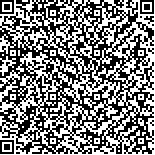冯娟娟,孙志,薛连平,等.基于代谢组学技术观察高压氧联合清开灵治疗对脑外伤后意识障碍患者代谢标志物的影响[J].中华物理医学与康复杂志,2024,46(5):438-442
扫码阅读全文

|
| 基于代谢组学技术观察高压氧联合清开灵治疗对脑外伤后意识障碍患者代谢标志物的影响 |
|
| |
| DOI:10.3760/cma.j.issn.0254-1424.2024.05.011 |
| 中文关键词: 高压氧 代谢组学 脑外伤 意识障碍 代谢标志物 |
| 英文关键词: Hyperbaric oxygen Serum metabolomics Brain trauma Consciousness Metabolomics Biomarkers |
| 基金项目:河南省高等学校重点科研项目(20A320030);河南省中医药科学研究专项课题(2023ZY3038);河南省科技厅科技攻关项目(242102310192) |
|
| 摘要点击次数: 2901 |
| 全文下载次数: 3189 |
| 中文摘要: |
| 目的 通过代谢组学技术分析脑外伤致意识障碍患者经高压氧联合清开灵治疗前、后其代谢标志物的变化,筛选出诊断标志物并用于指导临床诊疗及预后评估。 方法 选取36例脑外伤致意识障碍患者纳入观察组,同时选取性别、年龄、族别与患者匹配的40例健康体检者纳入对照组。入选后观察组患者在常规支持性治疗基础上辅以高压氧及清开灵药物干预,于治疗前、治疗14 d后采用格拉斯哥昏迷量表 (GCS)评估患者意识障碍程度;同时采集观察组治疗前、后及对照组静脉血,采用超高效液相色谱-四极杆-静电场轨道阱质谱(UHPLC-Q-Orbitrap HRMS)技术对各组对象血清样本进行代谢组学分析,筛选出观察组与对照组间有显著差异的特异代谢标志物。通过绘制受试者工作曲线(ROC),找出与疾病相关且具有诊断意义的代谢标志物,并观察上述诊断标志物在治疗前、后的变化情况。 结果 治疗后观察组患者GCS评分[(11.08±1.89)分]较治疗前[(9.83±1.89)分]显著升高(P<0.05),昏迷程度明显改善。治疗前与对照组比较,发现观察组共有21个潜在代谢标志物有显著差异,其中ROC曲线下面积(AUC)>0.85且具有较高诊断价值的代谢标志物共有8个(分别是肌酸、脯氨酸、尿酸、乙酰-L-肉碱、组氨酸、脯氨酸亮氨酸、色氨酸及9E-十八碳烯酸),经治疗后上述代谢标志物均发生明显回调并趋于健康对照组水平。AUC更接近于1的诊断标志物共有4个(分别是脯氨酸亮氨酸、9E-十八碳烯酸、尿酸及乙酰-L-肉碱),可用于脑外伤致意识障碍患者的辅助诊断及疗效评估。 结论 高压氧联合清开灵治疗能改善脑外伤致意识障碍患者的昏迷程度,纠正患者体内代谢紊乱,加速患者促醒。代谢组学筛选技术为识别脑外伤后意识障碍患者内源性代谢异常、指导临床诊疗及预后评估提供了一种新的手段。 |
| 英文摘要: |
| Objective To analyze any effect of combining hyperbaric oxygen with qingkailing on the metabolic biomarkers of consciousness disorder (CD) caused by brain trauma using metabolomics technology. Also, to screen out diagnostic markers for clinical treatment and prognosis. Methods Thirty-six patients with a CD caused by brain trauma formed the observation group, while 40 healthy gender-, age- and ethnicity-matched individuals were the control group. Both groups were given routine supportive treatment, while the observation group additionally received hyperbaric oxygen and oral qingkailing medication. Before and after 14 days consciousness disturbance was evaluated using the Glasgow Coma Scale (GCS). Venous blood was collected for metabolomic analysis using liquid chromatography linked to a mass spectrometer to screen out specific metabolic biomarkers. Metabolic markers associated with the disease and of diagnostic significance were thus identified. Results After the treatment the average GCS score of the observation group had improved significantly and the degree of coma was significantly relieved. Twenty-one metabolic markers were found to be significant, with creatine, proline, uric acid, acetyl-L-carnitine, histidine, proline leucine, tryptophan and 9E-octagenoic acid potentially of high diagnostic value. After the treatment, all of those markers came close to the levels observed in the healthy control group. Conclusions Proline, leucine, 9E-octagenoleic acid, uric acid and acetyl-L-carnitine could be used for diagnosis and evaluating efficacy with such patients. Hyperbaric oxygen supplemented with qingkailing can relieve coma, correct metabolic disorders and accelerate patients′ awakening. Metabolomics provides a new method for identifying endogenous metabolic abnormalities in patients with post-traumatic consciousness disorders. It can be useful in prognosis and clinical treatment. |
|
查看全文
查看/发表评论 下载PDF阅读器 |
| 关闭 |
|
|
|